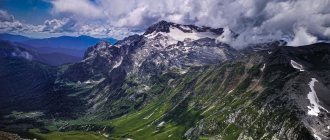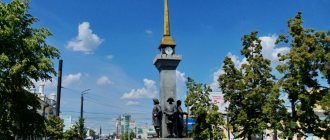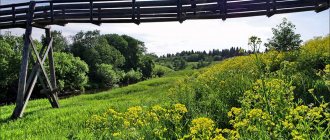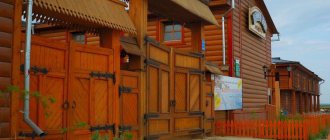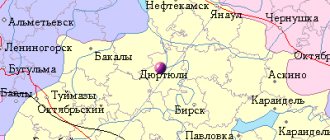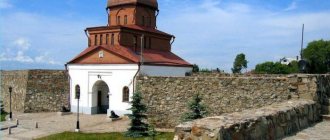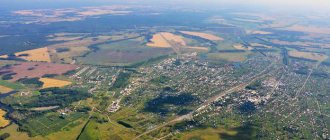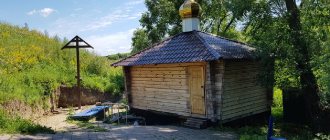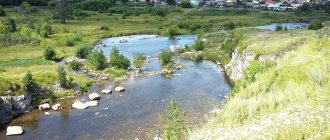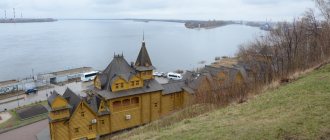Farms that gave the foundation to the city of Novotroitsk
Hello again, dear readers! Today we will talk to you about several settlements that once existed on the site of modern Novotroitsk.
Of course, many people know that the city of Novotroitsk arose from the village of Novo-Troitskoye, on a site near which the construction of OKMK began.
Altov and other well-known researchers of the history of Novotroitsk write that in addition to Novo-Troitsk, on the site of the modern city there was also the village of Silnov with several courtyards; this also includes Akkermanovka, Khabarnoye, Staro-Ackermanovka, and Novonikolskoye, as well as crossing point 213 km, Guberlyu station, Prigornoye village, Kryk-Pshak, Novorudny village. But all these settlements except Silnov and Novo-Troitsky became part of the city much later.
It should also be remembered that on the square of modern Novotroitsk there are tracts - disappeared settlements, such as the Berezhnaya Vtoroy farmstead, the Babak brothers' farmstead, as well as the Svyato-Troitsky farmstead (aka Dudnikov). I have already written about Berezhnaya Vtoroy and the Babak brothers’ farm; you can read the material by following the link.
Now I will try to describe to you how all this actually happened and tell you a little about Silnov and Holy Trinity.
If we take the map of the Orsk district of the Orenburg province in 1922, then on it we will, naturally, not see either modern Novotroitsk or Akkermanovka in the place where it is located now.
The map shows the Akkermanovsky farm (aka Ivanovsky), the Vostok agricultural artel, the Svyato-Troitsky farm (aka Dudnikov), Berezhnoy Vtoroy, the Babak brothers farm and others. Of course, the Khabarny detachment of the Orenburg Cossack army and the Razboika farmstead in the area of the Topkogo stream are indicated here.
But the village of Novo-Troitskoye does not exist, because it appeared a little later.
The village of Novo-Troitskoye was already mentioned in the lists of populated places in the Orenburg province in 1926. That is, in 1922 it was not yet there, but in 1926 it already was.
And where, you say, is Silnov?
And the village of Silnov is not indicated here. But he was. And it is one of the farms on the site of which Novotroitsk was built.
And what the “Vostok” agricultural artel is is generally unclear. But, of course, reference books come to the rescue and explain everything.
In the list of populated places of the Orenburg province in 1926, as part of the Orsky district of the Orsk volost, a settlement is indicated in the Khabarnensky village council
-commune “Vostok” at number 56.
There is only one courtyard in the commune, the predominant population is Tatars, 27 people live in the commune. The name of the commune was given by the population of eastern origin accordingly. But what follows is quite interesting. Under number 60 in the same directory, the village of Silnova is indicated, opposite which it is written that you need to look at number 56. That is, it turns out that the Vostok commune and the village of Silnova are the same settlement. Vostok is its modern name, and Silnov is its former name.
In one of the works on local history, written by my son, the Silnova farm was already mentioned. Together with him, we went to the Novotroitsk museum and exhibition complex, where we were shown its location next to the Novotroitsk cement plant.
In light of recent events and the identification of the Vostok commune and the Silnov farm, I was able to link the coordinates of the old map of 1922 and modern ones, as a result of which it turned out that the Silnov farm was located on the territory of modern Ural Steel.
But reading the memoirs of Alexei Dudnik’s grandson Alexander Pometun, it turned out that the Silnov farm was located in the area of the chemical plant workshops.
You can find out the history of the origin of the name by clicking on the link that contains the work.
Analyzing map data, people's memories, data from reference books on the territorial division of the Orenburg province, I came to the following.
At the beginning of the 20th century, in the place where the chemical plant workshops are now located (as Pometun recalls) (or 2.5 km to the south, as I determined), there was once a small farm of several courtyards that belonged to Silnov, a native of the Cossacks.
In 1901, the farm had 2 courtyards, it was located near Lake Udobnoe, and 6 people lived in it.
But why such different data on the location of the farm? Museum workers unanimously say that this is near the Cement Plant. And earlier in the work this location was written about. And the monument to Podzorov (an armored car) stands in place near the Tsemzavod. The work was written based on the memories of museum workers. Now I am ready to challenge this fact. The map gives me a place near the cooling towers of Ural Steel; Dudnik’s grandson remembers the workshops of the chemical plant. I believe that the determination of the location of Silnov near the Tsemzavod is incorrect; most likely, the museum workers were guided by the fact that near the Tsemzavod there is a monument to the armored car of the sailor Podzorov, in which he died fighting the Cossacks in the area of the Silnova farm. But Podzorov died in the place where now there is a monument with a flying seagull when leaving Orsk towards Novotroitsk, opposite the cross-monument to the fallen Cossacks during the Civil War. That is, it seemed logical to put an armored car there. But the Podzorovites died in the area of the Silnova farmstead, and not near it. Therefore, the Silnova farm could not be located where the monument now stands. It was located, this farm, some 7 km from the place of death. What else was there to take as a guide during the Civil War? Khabarnoye is quite far away, Orsk is approximately 18 km from the place of death. Nearby are the farms of Silnova, Svyato-Troitsky, the Babak brothers, Berezhnoy Vtoroy, Akkermansky, and somewhere very far away are the farms of Razboiny, Beloshapochny. We took the Silnova farmstead as a landmark for the place of death. With the same success, the Svyato-Troitsky farm could have remained in history; it was also not far away. But Silnov remained in my memory. Pometun’s memoirs also include circumstances in which his grandfather Alexei Dudnik (a resident of Svyato-Troitsky) saved one of the wounded Podzorovites. And then he was confused with Silnov (whose farm was nearby) and brought to Orsk for trial. But the rescued Podzorovite recognized his savior Dudnik and insisted that it was definitely not Silnov, but “the dedicated comrade Dudnik.”
Local historian of the Orenburg region
The territories subordinate to the administrations of Orsk and Novotroitsk occupy 0.69 and 0.20 thousand km2, respectively. Most of the famous natural monuments of these territories are associated with mining and technical activities, reflecting various pages of geological history and representing fragments of unique mineral deposits.
The most famous deposit of semi-precious jasper in the Southern Urals is Orskoye, or the Mount Polkovnik deposit. It has been in development for about 250 years. The deposit is located on the left bank of the Or River, several kilometers southeast of Orsk. Mount Colonel is a block-ridge outcrop of jasper on the slope and top of a gentle ridge, rising 25-30 m above the Or River. The deposit area is composed of diabases, gabbro-diabases and diabase porphyrites, alternating with tuffogenic siliceous shales and lens-shaped bodies of wax-red and greenish-gray jasper. This sequence is broken by numerous faults. The rocks are altered by metamorphism and contain chlorite, epidote, and albite. The age of the strata is Early-Middle Devonian.
The rocks of this sequence have a clayey weathering crust containing blocks and lenses of wax-red and variegated jasper. The thickness of the weathering crust varies from 2-3 to 25 m. In the quarry, under loams and clays of Quaternary-Late Pliocene age, a productive stratum is exposed, represented by weathering crust clays with jasper blocks ranging in size from 0.5 to 10-15 m.
The variegated jaspers of Mount Colonel come in three main varieties.
One of them consists of jaspers with a concentric pattern like cut beets. Alternating regular or fibrous rings are colored with oxides of iron and manganese in pink, reddish-brown and black tones, and compounds of chromium and nickel - in greenish-gray tones. Such jasper patterns appear to arise as a result of the diffusion of aqueous solutions and the slow movement of components dissolved in them.
Another variety is brecciated jasper, in which detrital fragments of jasper are observed, cemented by a fine-grained quartz-hematite aggregate.
The third variety is represented by jaspers with a fluid pattern, formed by light and dark red and purple streams, intricately curving and merging together. All variegated jaspers contain quartz veins, sometimes containing magnetite and pyrite cubes.
Academician A.E. Fersman wrote about the Orsk jaspers: “It is difficult to give an exhaustive description of this jasper - its patterns and colors are so varied, we know over two hundred varieties of jasper in this area, and the best patterns and colors belong specifically to the jaspers of this deposit.”
The main component of Orsk jasper is fine-grained quartz, the content of which reaches 90%. Characteristic impurities: epidote, chlorite, actinolite, garnet, carbonates, pyrite, magnetite, hematite, hydrous oxides of iron and manganese, sometimes carbonaceous organic matter
The origin of Orsk jaspers is very complex: they first arose as volcanic-sedimentary rocks at the bottom of a deep sea basin, and then underwent metasomatic processes during the metamorphism of the enclosing volcanogenic strata.
Jaspers are also found in Orsk itself. Back in 1769, Academician P.S. Pallas, who visited the city, drew attention to the fact that Preobrazhenskaya Mountain, on the slope of which the fortress and the city were built, and the temple has now been restored, consists of a variety of jaspers of various shades. In the vicinity of the Orsk fortress there were already quarries in which jasper of exceptional beauty was mined. In the descriptions of Pallas it is called Slate Mountain (from “jasper” - jasper).
Products made from jasper from the Orsk deposits are widely known; they can be seen in all major museums: the Hermitage, the Russian Museum, the Geological Museum of the Mining Institute in Yekaterinburg and many other cities.
Approximately 10 km south of Orsk (from the railway bridge across the Urals on the Orsk-Kandagach branch) in the upper reaches of the Kzylsay gully, a very rare occurrence of bauxite for the region was noted. Here, along the slopes of the ravine, on the eroded surface of the weathering crust over Middle Jurassic clays, there is a layer of yellow bauxite. Their age is Early Cretaceous. The bauxite-containing sequence is called the Kzylsay Formation, so the section is its stratotype.
Immediately below Orsk (west of the railway bridge), the Ural valley forms the so-called Orsk Gate, or Orsk Gorge. This is the valley of the Ural River breakthrough, about 1 km long, between the Orsk and Akkerman depressions. Overhanging the river on the right and left are rocky outcrops of various rocks, including sections of the Sakmara Formation of the Silurian, represented by siliceous accumulations. In addition, serpentinites and Devonian volcanogenic rocks are exposed in the gorge. From the point of view of engineering construction, in the gorge one can observe an example of the successful use of the narrowing of the valley for the construction of a railway bridge.
In the area of the village of Akkermanovka, which is part of the territory subordinate to the Novotroitsk administration, reference sections in mined-out quarries are of great scientific and educational interest.
In the Akkerman manganese quarry, steeply dipping and crumpled siliceous layers of the Lower Carboniferous were exposed. It is located on the right slope of the Lime Valley. Here, in separate black layers, you can find rare minerals pyrolusite and psilomelane, which are manganese hydroxides. The deposit was discovered by I. L. Rudnitsky and was developed in 1941 - 1945.
The geological standard of Mesozoic delta-lacustrine iron ores in karst depressions is presented in sections of the Akkerman iron ore quarry. The mined-out section is located 1.5 km northeast of Akkermanovka.
On the western outskirts of the village there is a group of exhausted nickel quarries. Their sections can be considered as standards for linear-type nickel silicate deposits. In the walls of the Akkerman nickel quarries there are outcrops of serpentinites containing opal-chalcedony formations.
Geological standards of magmatic chromite deposits can be observed in the old Khabarninsky chromite quarries.
Among other geological attractions of Novotroitsk and Orsk, the Maksai gully is distinguished, on the left slope of which in its upper reaches a typical section of the Lower Cretaceous Maksai Formation was discovered in the form of outcrops of pink polymictic conglomerates. Fine outcrops of these rocks are exposed along the Lime Valley.
A landscape landmark in the vicinity of Akkermanovka is the Banka tract. It is located on a steep bend of the stream and is a rocky cliff on its left bank. Here, two dinosaur-like rocks composed of metamorphic schists attract attention. The eastern part of the rock outcrops is composed of gabbro-diabase. At the foot of the cliff, along the stream, individual black alder and birch trees grow. The place is often visited by photographers and just vacationers
Floodplain forests in the Urals are of great recreational value for Orsk and Novotroitsk. One of the forest blocks of the Orsky forestry (K 35), the Orsky poplar forest, is designated as a genetic reserve for black poplar.
The named natural monuments are of great educational importance for Orsk and Novotroitsk and can be included in the schemes of ecological routes for schoolchildren in these cities.
Literature
- A. Chibilev “Natural heritage of the Orenburg region.” Orenburg book publishing house, 1996
